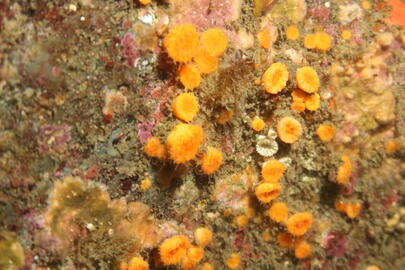
Hard limestone cup. Anemone-like creature has nearly-transparent tentacles with obvious nodules containing nematocysts.

Hard limestone cup. Anemone-like creature has nearly-transparent tentacles with obvious nodules containing nematocysts.
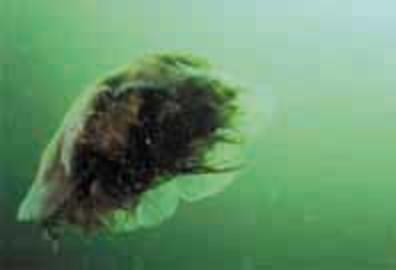
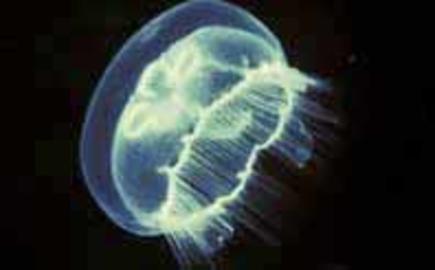
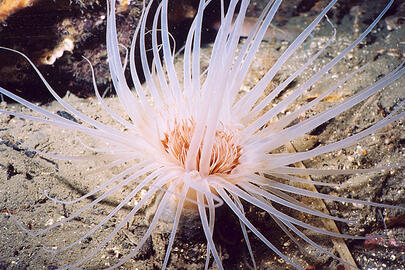
Two sets of banded tentacles are white, brown, black or orange. The anemone secretes a tube that can extend 1m (3ft) in the mud. Favorite food item of the giant nudibranch.
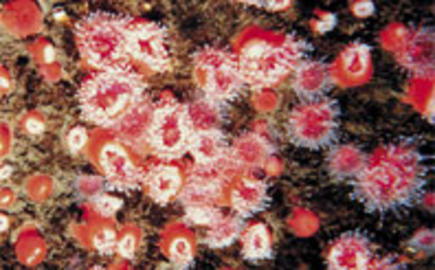
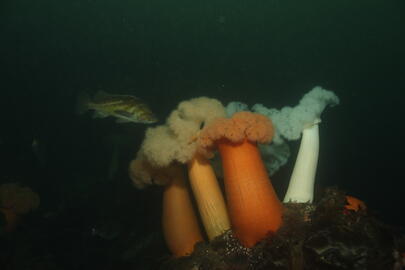
Large, aggregating, white, orange, tan, or brown anemone. M. giganteum has up to 200 translucent tentacles. It is larger than M. senile. M. senile has fewer than 100 short tentacles. Both are monitored together in survey program.